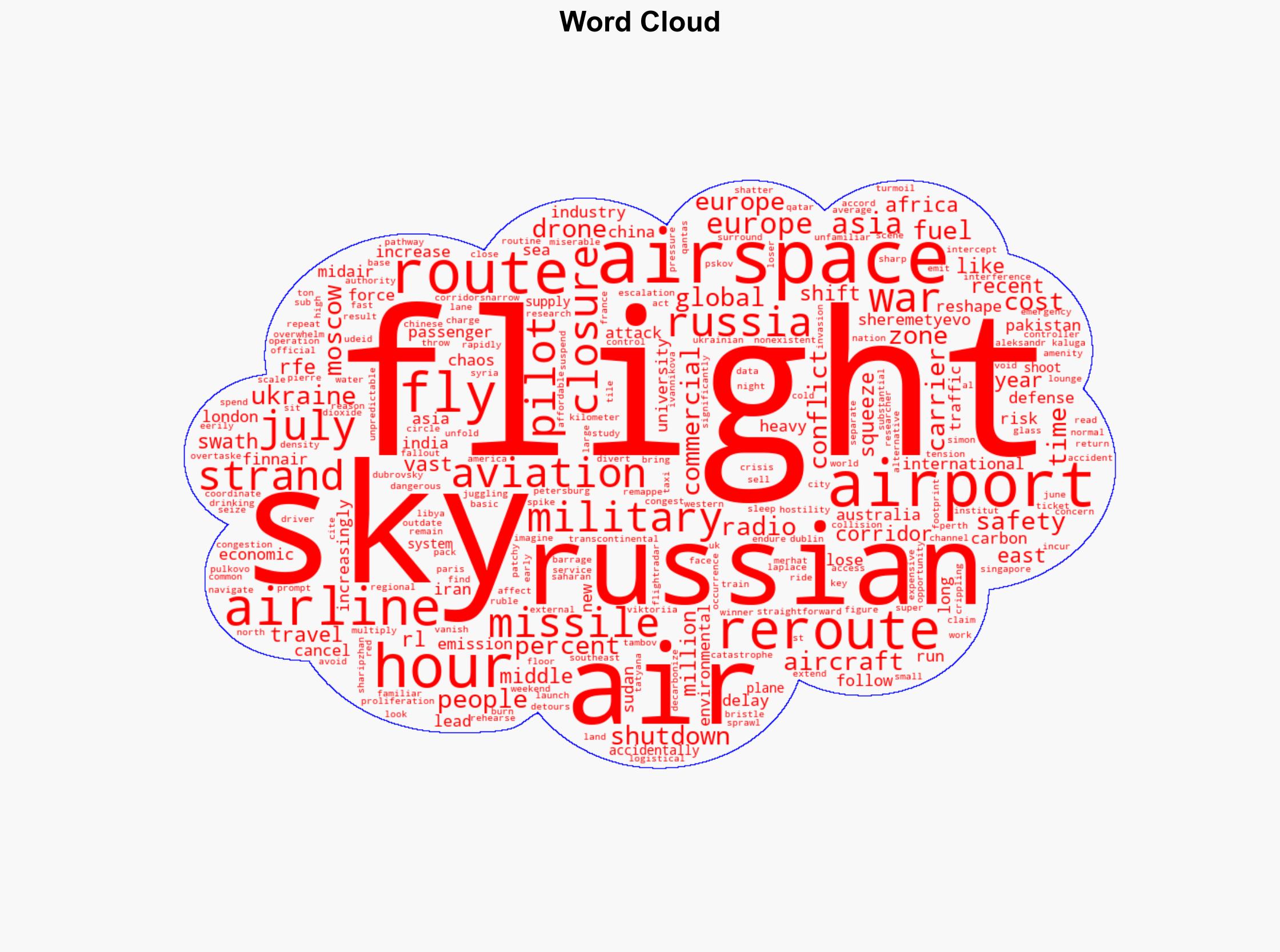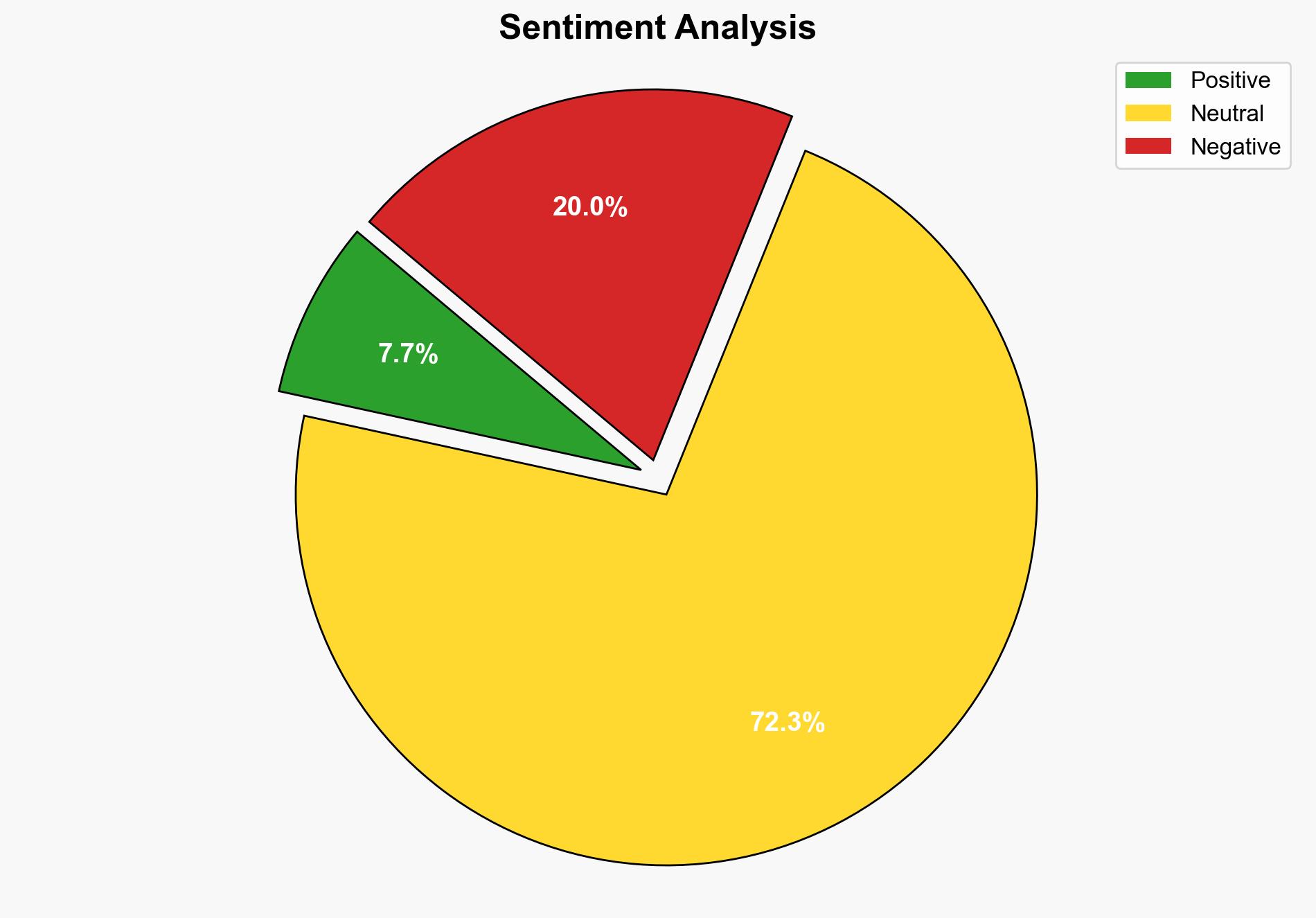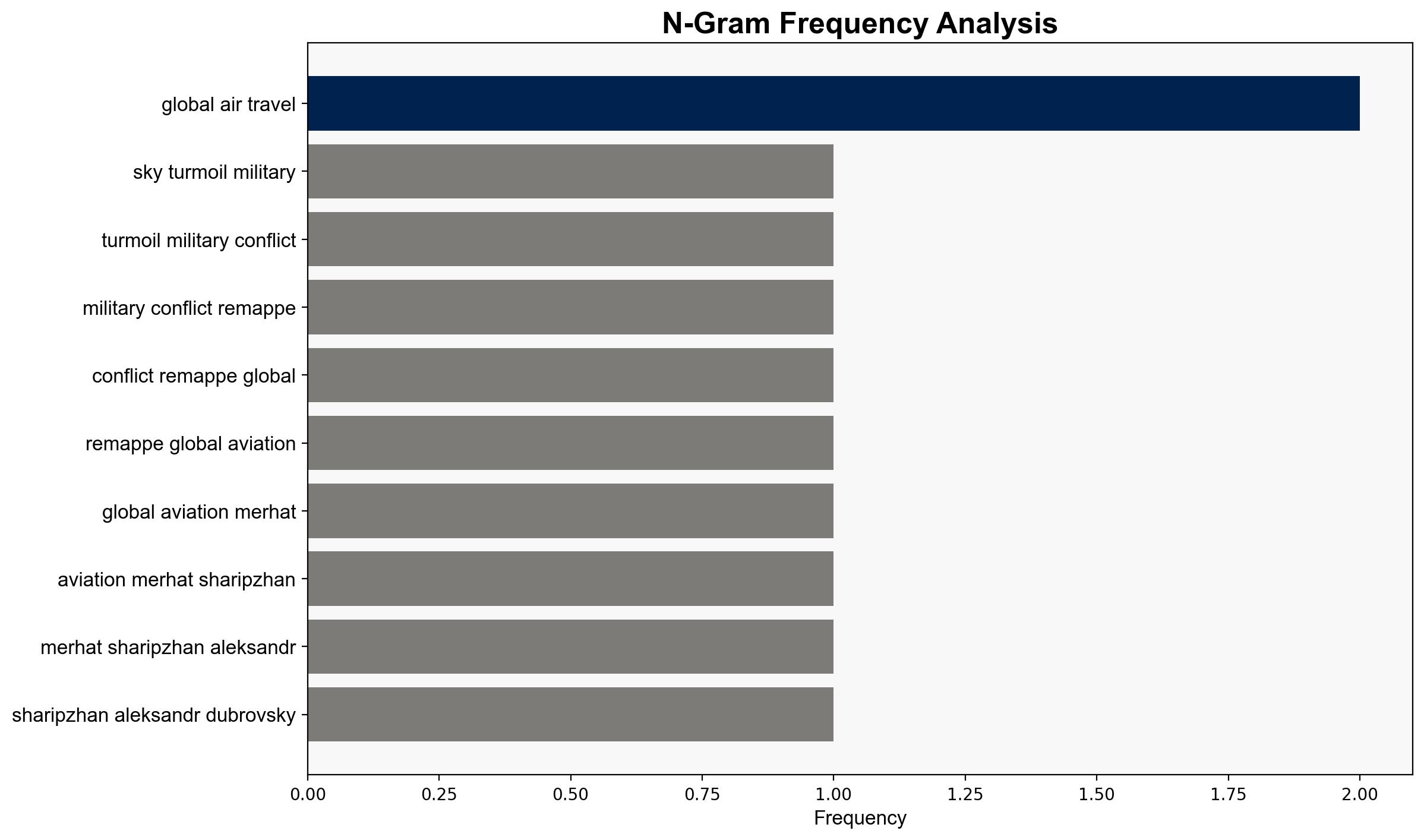Skies In Turmoil Military Conflicts Remapping Global Aviation – Globalsecurity.org
Published on: 2025-07-29
Intelligence Report: Skies In Turmoil Military Conflicts Remapping Global Aviation – Globalsecurity.org
1. BLUF (Bottom Line Up Front)
The global aviation landscape is undergoing significant disruption due to military conflicts and geopolitical tensions, leading to increased risks and operational costs. The most supported hypothesis is that these disruptions will persist, necessitating strategic adaptations by airlines and governments. Confidence Level: Moderate. Recommended action includes enhancing international coordination for airspace management and investing in alternative routing technologies.
2. Competing Hypotheses
Hypothesis 1: The current disruptions in global aviation are temporary and will stabilize as geopolitical tensions ease and new airspace agreements are negotiated.
Hypothesis 2: The disruptions represent a new normal in global aviation, driven by persistent geopolitical conflicts and the strategic use of airspace as a tool of economic and military leverage.
Using Analysis of Competing Hypotheses (ACH), Hypothesis 2 is better supported. The consistent pattern of airspace closures, coupled with the strategic advantages gained by certain airlines, suggests a long-term shift rather than a temporary anomaly.
3. Key Assumptions and Red Flags
Assumptions:
– Geopolitical tensions will not escalate into broader conflicts.
– Airlines have the capacity to adapt to new routing challenges.
Red Flags:
– Increased frequency of airspace closures without diplomatic resolutions.
– Lack of coordinated international response to manage airspace conflicts.
4. Implications and Strategic Risks
The ongoing airspace disruptions could lead to increased operational costs for airlines, impacting global trade and tourism. The strategic use of airspace as leverage in geopolitical conflicts may lead to further regional instability. Environmental impacts due to longer flight routes could exacerbate climate change concerns. The risk of mid-air collisions and air traffic control overload increases as flight corridors become congested.
5. Recommendations and Outlook
- Enhance international coordination for airspace management to mitigate risks.
- Invest in technology for real-time airspace monitoring and alternative routing.
- Scenario Projections:
- Best Case: Geopolitical tensions ease, leading to the reopening of airspace and reduced operational costs.
- Worst Case: Escalation of conflicts results in further airspace closures and increased risk of aviation incidents.
- Most Likely: Continued strategic use of airspace as leverage, necessitating long-term adaptations by airlines.
6. Key Individuals and Entities
– Tatyana (passenger at Sheremetyevo Airport)
– Viktoriia Ivannikova (aviation researcher)
7. Thematic Tags
national security threats, cybersecurity, counter-terrorism, regional focus





